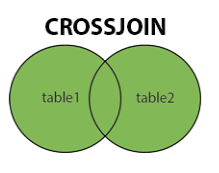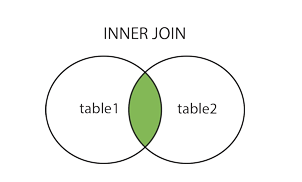
DbSchema | How to Implement JOINS in SQLite?

Table of Contents
- Introduction
- Prerequisites
- What are JOINS
- Types of JOINS
- Advantages and Limitations of using JOINS
- How to Implement JOINS in sqlite3
- How to Implement JOINS in DbSchema
- Conclusion
- References
Introduction
This article aims to provide a detailed explanation about JOINS in SQL, their usage, advantages, and limitations. Further, we delve into how to implement JOINS in sqlite3 and DbSchema with the help of a sample database.
Prerequisites
- Basic understanding of SQL and databases
- SQLite3 and DbSchema installed on your machine
- Familiarity with SQL JOINs
For installation and establishing connection you can read our article SQLite-How to create a database?
What are JOINS
In SQL, a JOIN clause is used to combine rows from two or more tables, based on a related column between them. It allows users to perform complex queries that can involve more than one table, enabling data from multiple tables to be combined into a single result set.
Types of JOINS
Here are the different types of JOINS:
| Join Type | Description |
|---|---|
| INNER JOIN | Returns records that have matching values in both tables |
| LEFT (OUTER) JOIN | Returns all records from the left table, and the matched records from the right table |
| RIGHT (OUTER) JOIN | Returns all records from the right table, and the matched records from the left table |
| FULL (OUTER) JOIN | Returns all records when there is a match in either left or right table |
| CROSS JOIN | Returns the Cartesian product of rows from tables in the join |
Advantages and Limitations of using JOINS
Advantages:
- They help in combining data from multiple tables.
- Can help to normalize databases by eliminating redundancy.
- Enhances the database search, retrieval, and sorting processes.
Limitations:
- JOINS can become complicated quickly, leading to complex queries.
- Improper use of JOINS can lead to performance issues as they require a lot of system resources.
- FULL OUTER JOINS are not directly supported in all database systems (e.g., SQLite).
How to Implement JOINS in sqlite3
Step 1: Open your SQLite database using sqlite3 in your command line:
|
Step 2: Create a New Database
To create a new database, type the following command:
|
To know more about creating a database you can read our article SQLite-How to create a database?
Step 3: Create tables and populate data
Let’s consider two tables: Orders and Customers and insert some data in them.
|
To know more about creating a table you can read our article SQLite-How to create a Table?
Sample Database
Orders Table:
| OrderID | _CustomerID_ | _Product_ |
|---|---|---|
| 1 | 3 | Apples |
| 2 | 1 | Bananas |
| 3 | 2 | Grapes |
Customers Table:
| CustomerID | Name |
|---|---|
| 1 | Bob |
| 2 | Alice |
| 3 | Tom |
Step 4 : Execute Joins:

Cross Join
|
Result After Executing The Query:
Following result was obtained after implementing cross join on sample database:
| OrderID | _CustomerID_ | Product | CustomerID | _Name_ |
|---|---|---|---|---|
| 1 | 3 | Apples | 1 | Bob |
| 1 | 3 | Apples | 2 | Alice |
| 1 | 3 | Apples | 3 | Tom |
| 2 | 1 | Bananas | 1 | Bob |
| 2 | 1 | Bananas | 2 | Alice |
| 2 | 1 | Bananas | 3 | Tom |
| 3 | 2 | Grapes | 1 | Bob |
| 3 | 2 | Grapes | 2 | Alice |
| 3 | 2 | Grapes | 3 | Tom |

Inner Join
|
Result After Executing The Query:
Following result was obtained after implementing inner join on sample database:
| OrderID | Name | Product |
|---|---|---|
| 1 | Tom | Apples |
| 2 | Bob | Bananas |
| 3 | Alice | Grapes |
Outer Join
SQLite does not support the syntax for FULL OUTER JOIN, but it can be simulated:
|
Result After Executing The Query:
Following result was obtained after executing above query on sample database:
| OrderID | _Name_ | Product |
|---|---|---|
| 1 | Tom | Apples |
| 2 | Bob | Bananas |
| 3 | Alice | Grapes |
Note:
Please note that the output of this query remains the same as the INNER JOIN output because there are no Customers without an Order or Orders without a Customer in our sample data. If there were Customers without any Orders or vice versa, they would be included in this output.
How to Implement JOINS in DbSchema
Open your project.
Go to the menu bar, and click on Data -> Relational Data Browse.
Click on Add Table to Diagram button, select Orders and Customers tables and click
OK. The tables will be displayed on the canvas.Drag and drop the
CustomerIDcolumn name fromOrderstable over theCustomerIDcolumn inCustomerstable. This will create arelationship linebetween the two tables indicating a JOIN.On the right panel, you can see
Filter,Sort,Group by,Pagingtabs. You can add filters or sorting, as needed.Click on the SQL button to view the
SQL Querygenerated for the JOIN. The generated SQL will be anINNER JOINby default.Finally, click on the
Execute SQLbutton to view the results.
For different JOIN types, you can manually edit the generated SQL. For example, for LEFT JOIN, replace INNER JOIN with LEFT JOIN in the query.
Visually Manage SQLite using DbSchema
DbSchema is a SQLite client and visual designer. DbSchema has a free Community Edition, which can be downloaded here.
Key Features of DbSchema:
Following are the key features of DbSchema which distinguish it from other database GUI tools.
Conclusion
In summary, JOINs are powerful tools in SQL, allowing for efficient interaction and data retrieval from multiple tables. The JOIN operation, while resource-intensive and complex in some scenarios, remains a pivotal component of the SQL toolkit. Being adept with different types of JOINS and their implementations across various systems like sqlite3 and DbSchema is a valuable skill for any data manipulator or analyst.



